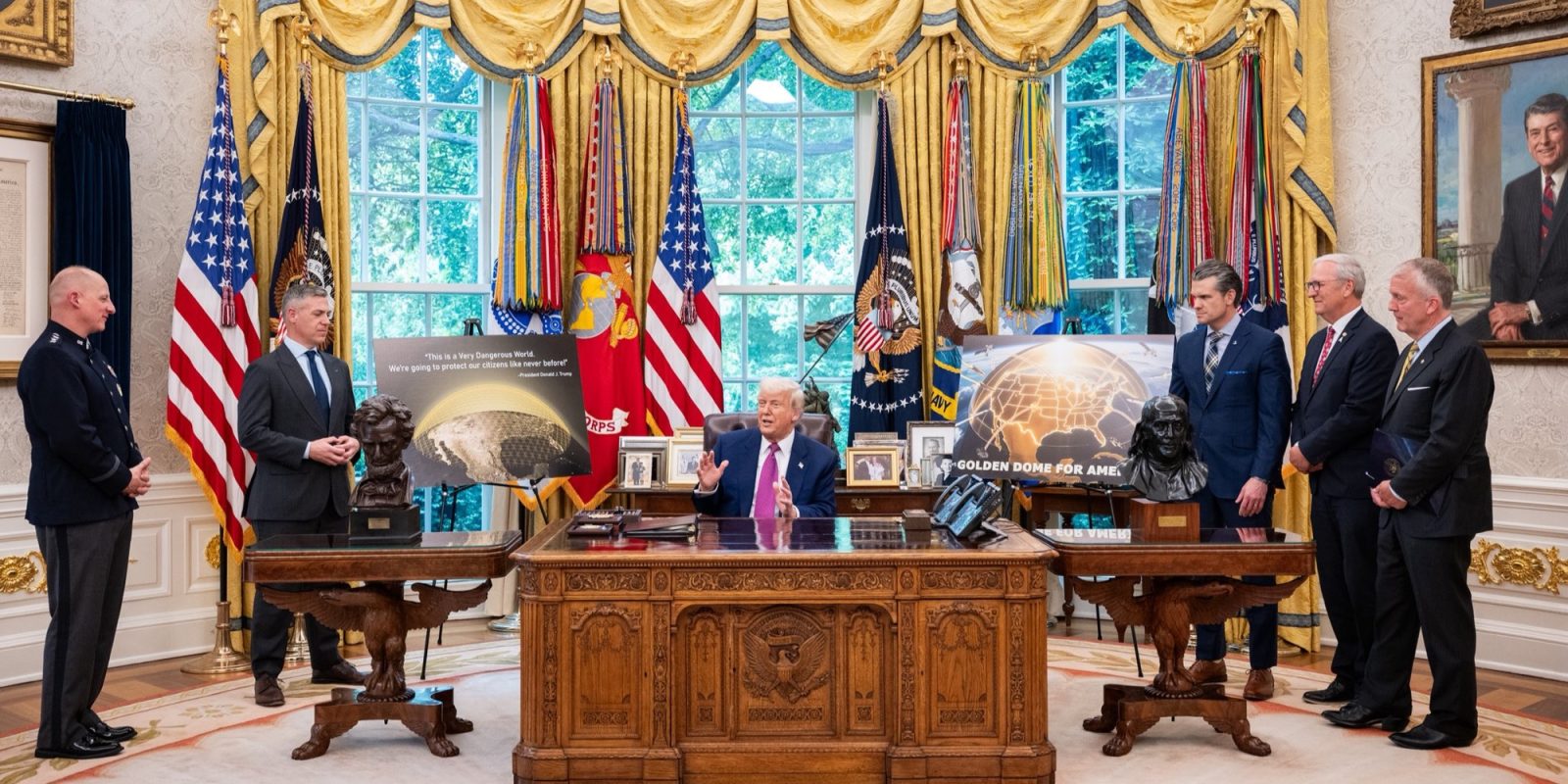
On May 20, President Donald Trump formally announced the “Golden Dome,” a sweeping national missile defense initiative designed to shield the United States from the most advanced modern threats, including ballistic, cruise, and hypersonic missiles. The system, drawing structural inspiration from Israel’s Iron Dome, would differ vastly in scale and scope, incorporating next-generation technologies across land, sea, and space to provide a comprehensive, multilayered defensive shield.
“The threat of attack by ballistic, hypersonic, and cruise missiles remains the most catastrophic threat facing the United States,” Trump said during the announcement. “We will build the most advanced missile defense system the world has ever seen.”
The Golden Dome aims to integrate space-based early warning systems with land-based interceptors to detect and neutralize threats at multiple points in their trajectory – boost phase, midcourse, and terminal descent. A constellation of advanced satellites equipped with real-time tracking sensors would play a crucial role in identifying threats, feeding data to ground stations and intercept systems for rapid response.
General Michael Guetlein of the U.S. Space Force has been tapped to oversee the initiative. He brings extensive experience in space operations and acquisitions and is expected to lead the effort to ensure interoperability across various layers of existing U.S. defense infrastructure. The system is expected to evolve from and build upon current platforms like Aegis, THAAD, and Patriot, while introducing space-based interceptors as part of a longer-term strategic shift.
Initial funding has been set at $25 billion, but projections suggest total costs could reach $175 billion, with some long-range estimates climbing as high as $542 billion depending on technological maturity and operational demands. Despite those numbers, Trump has insisted the investment is justified.
“You cannot put a price tag on national survival,” Trump remarked during the announcement. Development is expected to progress rapidly, with deployment targeted before the end of his term in 2029.
The initial $25 billion is part of a 2025 reconciliation bill that would add $150 billion to the Department of Defense, but the legislation has not yet passed Congress. Before the Golden Dome can begin to become reality, the program must clear the congressional budget process – a step that is likely to trigger partisan debate and close scrutiny from key defense and appropriations committees.
Thomas Karako, director of the Missile Defense Project at the Center for Strategic and International Studies, said, “The integration of space-based assets into missile defense is a logical progression. It allows for earlier detection and a broader coverage area, which is crucial in countering modern missile threats.”
While experts like Karako are cautiously optimistic, others have raised questions about technical feasibility and cost containment, especially given the pace at which adversarial missile technology is evolving.
This isn’t the first time such a system has been proposed. President Ronald Reagan’s 1983 Strategic Defense Initiative, or SDI – sometimes mockingly called “Star Wars” – sought a space-based missile shield aimed at intercepting Soviet nuclear weapons. It faced steep political, technical, and budgetary hurdles and was never fully realized.
Trump’s Golden Dome initiative has prompted interest abroad. Canada has signaled a willingness to participate, though the president has emphasized that any allies seeking coverage would be expected to contribute financially.
While international buy-in could increase both strategic reach and shared responsibility, some lawmakers are concerned about transparency, governance, and the potential for an arms race – especially in space.
Whether the Golden Dome ultimately redefines national security or becomes mired in bureaucratic and fiscal challenges remains to be seen. What is clear, however, is that this initiative reflects a broader recognition of the changing nature of global threats and a willingness to push the boundaries of current defense capabilities to meet them.
FTC: We use income earning auto affiliate links. More.



Comments